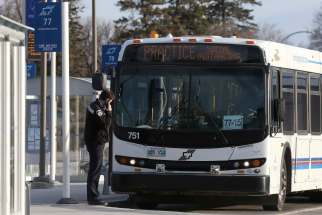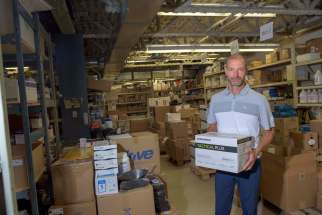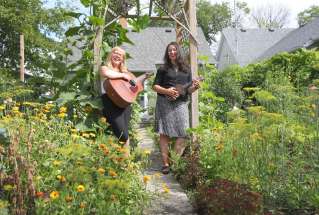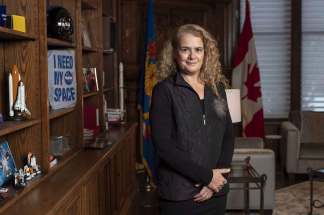Reading, writing and physical distancing Summer school students, staff play pandemic guinea pigs for safe return-to-school strategy
Read this article for free:
or
Already have an account? Log in here »
To continue reading, please subscribe:
Monthly Digital Subscription
$0 for the first 4 weeks*
- Enjoy unlimited reading on winnipegfreepress.com
- Read the E-Edition, our digital replica newspaper
- Access News Break, our award-winning app
- Play interactive puzzles
*No charge for 4 weeks then price increases to the regular rate of $19.00 plus GST every four weeks. Offer available to new and qualified returning subscribers only. Cancel any time.
Monthly Digital Subscription
$4.75/week*
- Enjoy unlimited reading on winnipegfreepress.com
- Read the E-Edition, our digital replica newspaper
- Access News Break, our award-winning app
- Play interactive puzzles
*Billed as $19 plus GST every four weeks. Cancel any time.
To continue reading, please subscribe:
Add Free Press access to your Brandon Sun subscription for only an additional
$1 for the first 4 weeks*
*Your next subscription payment will increase by $1.00 and you will be charged $16.99 plus GST for four weeks. After four weeks, your payment will increase to $23.99 plus GST every four weeks.
Read unlimited articles for free today:
or
Already have an account? Log in here »
Hey there, time traveller!
This article was published 23/07/2020 (1968 days ago), so information in it may no longer be current.
Summer students and staff are proving to be the pandemic guinea pigs for a safe return to schools in Manitoba, as they roam hallways equipped with newly installed arrow stickers, taped off water fountains and hand-sanitizer stations this month.
The nearly 100 high school students enrolled in the Winnipeg School Division’s summer sessions between Andrew Mynarski V.C. School and Grant Park High School are learning that physical distancing is now just as much a part of the school day as reading, writing and arithmetic.
Summer principal Pat Burgess said the novel coronavirus pandemic has turned education “upside down” — considering long-standing lessons about sharing and collaboration are at odds with public health protocols. But despite the pivot required, she said students have adapted with ease.
“The students are very receptive of the social distancing; most of them, I would say 99.9 per cent of them, are respecting those limits and they’re following our recommendations and our encouragement,” said vice-principal Shaun Bright, echoing his colleague’s comments.
Students at Andrew Mynarski show up at either the 9 a.m., 10 a.m. or 10:30 a.m. slot to start the summer school day. When a cohort arrives, students have to wait outside for their teacher to come get them via a designated entrance and exit. The students then follow directional arrows to their class, apply hand sanitizer and take their seats at assigned desks, spaced out further than usual. The class sizes have been capped at 10 to avoid cramping spaces, and students are all asked to spend breaks inside their class to maintain their bubble.
“The students are very receptive of the social distancing; most of them, I would say 99.9 per cent of them, are respecting those limits and they’re following our recommendations and our encouragement.”
– Summer vice-principal Shaun Bright
Classroom doors remain open throughout the day to minimize the need to touch surfaces, and windows are open to allow a summer breeze in. While masks aren’t required, approximately half of the students wear them daily.
Administrators have also established a strict sick policy: if a student becomes ill, they are given a mask and taken to an isolated room in the school, where they have to wait for a pick-up. Two weeks into the semester, Bright said the sick protocol has been used once.
For Grade 12 student Nitish Sharma, the protocols are common sense. At the same time, Sharma said he’s still fighting muscle memory when it comes to the new washroom process. (Only two people are allowed inside the facilities at once, and their use often requires a knock and if at capacity, a spaced out line-up in the hallway.)
When it comes to classroom instruction, Sharma said he actually prefers the set-up to pre-pandemic instruction; with only eight students in his senior English course, there are more opportunities for individual teacher support. “If the classes stay this size, there’s nothing to worry about (come fall),” he said during a study break at Andrew Mynarski Thursday.
Since summer school planning takes place on a much smaller scale than usual, WSD staff are cautious about giving advice for back-to-school this fall.
Throughout July, students only had one intensive course on their timetable. During a standard semester, they take a mix of course disciplines and levels. Finding a way to limit intermingling while allowing students freedom in creating their schedules will be the toughest challenge, Bright said.
It also remains uncertain how instruction will look as of Sept. 8. The province is expected to announce the plan — near-normal instruction; regular in-person instruction for K-8 students with blended learning for high schoolers; or ongoing remote learning — on Aug. 1.
No matter the decision, high school teacher Linsey Piel-Glade said educators will have to plan ahead, not unlike in previous years. She said navigating the classroom during a pandemic requires forward thinking; for instance, if a student requires one-on-one support, Piel-Glade has used the board or projector to help from afar this month.
maggie.macintosh@freepress.mb.ca
Twitter: @macintoshmaggie

Maggie Macintosh reports on education for the Winnipeg Free Press. Funding for the Free Press education reporter comes from the Government of Canada through the Local Journalism Initiative.
Our newsroom depends on a growing audience of readers to power our journalism. If you are not a paid reader, please consider becoming a subscriber.
Our newsroom depends on its audience of readers to power our journalism. Thank you for your support.







